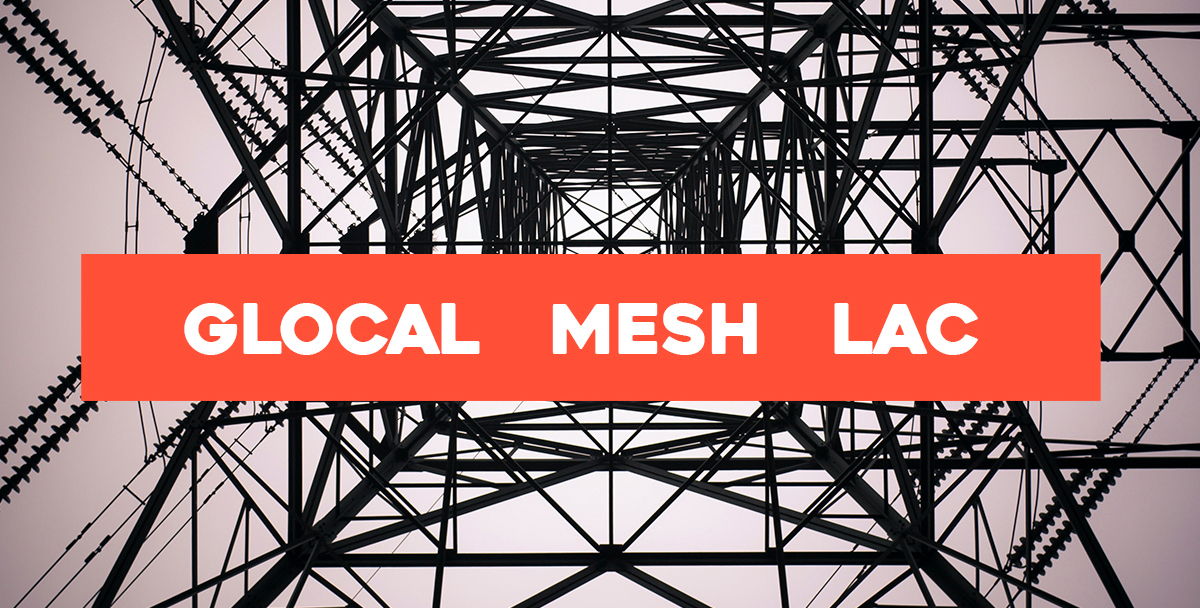
Understanding the Internet. Networks for all
Glocal Mesh LAC (GML) aimed to explore practices in critical digital education to broaden the participation of individuals in the governance of the digital ecosystem in Latin America.
In the case of GML the central themes were:
- Internet’s technical functioning and governance, and its spaces for youth.
- Digital divides and digital education.
- Community network alternatives to connect.
- Human rights, neutrality, surveillance and privacy in the network.
The importance of the project is related to the insufficient availability of digital education policies based on Human Rights (HHRR). Redressing this context is fundamental for individuals to reflect on the internet’s growing entrenchment in societies and to encourage a broader and more active global citizenship that can mitigate its negative implications.
Digital education has been characterized by referring mainly to teaching and learning with digital technologies, prioritising skills for the job market and limiting the understanding of digital technologies to STEM (Science, Technology, Engineering and Mathematics) disciplines. Developing digital education across broader disciplines is key to addressing the wide social divides and growing human rights violations that digital technologies are amplifying, especially in Latin America.
In this context, in order to contribute to the field of digital education, GML carried out an action research methodology to develop resources and practices, assessing them and making adjustments in a dynamic way. For this purpose, synchronous online activities involving digital rights activists, youth, representatives of educational centers and NGOs working with them from different countries in the region were carried out.
During January and February 2021 around 28 participants from Honduras, Mexico, Ecuador, Bolivia, Paraguay and Spain took part in weekly “Webinars” and “Mingas”. In these activities they discussed the central themes of GML and progressed in practical activities to reflect on them and elaborate a community network project. In the same way, in each instance, dynamics were implemented to gather ideas from participants to make the GML project more inclusive and accessible.
To promote a co-creation approach, different organizations and professionals dedicated to these issues in Latin America facilitated Webinars and shared their materials. These included, Sylvain Mignot from Totem Project, Eileen Cejas and Juan Pájaro Velázquez from Youth Observatory, Karla Velasco Ramos from Redes A.C., Telecommunications Engineer Hernán Susunday, and Iván Martínez from R3D. Likewise, further educational resources were shared from third organizations dedicated to community networks in the Americas such as Altermundi, Colnodo and Detroit Community Technology.
As a result of GML, materials, recommendations and reflections were shared about the possibilities, limitations of this experience and the next steps to continue developing them.
Among its conclusions we highlight:
-
The participatory action research methodology to develop educational resources in a collaborative, agile way and directly involving its community. However, evaluating the appropriateness of GML in a more comprehensive way was often challenging given the limited availability of time and use of low technologies (internet and cell phones) by its participants.
-
The period of the year in which GML was implemented was a major constraint, with schools closed and students of the participating educators not having internet access at home. This resulted in not obtaining greater participation and input among the younger segments. At the same time, it opened the possibility of evaluating the results of GML in the future, by consulting educators about the application of GML aspects in their practices.
-
In relation to the previous point, the opportunity to develop the great variety of ideas proposed by the participants to localize GML practices and materials in their respective countries was raised. This will allow amplifying the achievements and deepening the co-creative dimension of the project, both in critical digital education and in community networks.
-
The main results of GML so far are the development of a pedagogical proposal, materials and a regional community interested in continuing to develop them. In the words of the participants “we kept the seed”, “now we have the thorn of being able to transmit it”.
Join Glocal Mesh LAC 🚀
-
Use the GML Toolkit with materials, activities and recommendations.
-
Learn more about its creation and applications by reading the blog article with some reflections on the experience.
-
Access its publication on the website of LACNIC’s 2.0 Leaders program, which supported the project, and other research on digital gaps in access, education and rights in Latin America.
Note: all versions available in Spanish, Castilian.
Cover photo by Shane Rounce on Unsplash
Site last updated 01.06.21